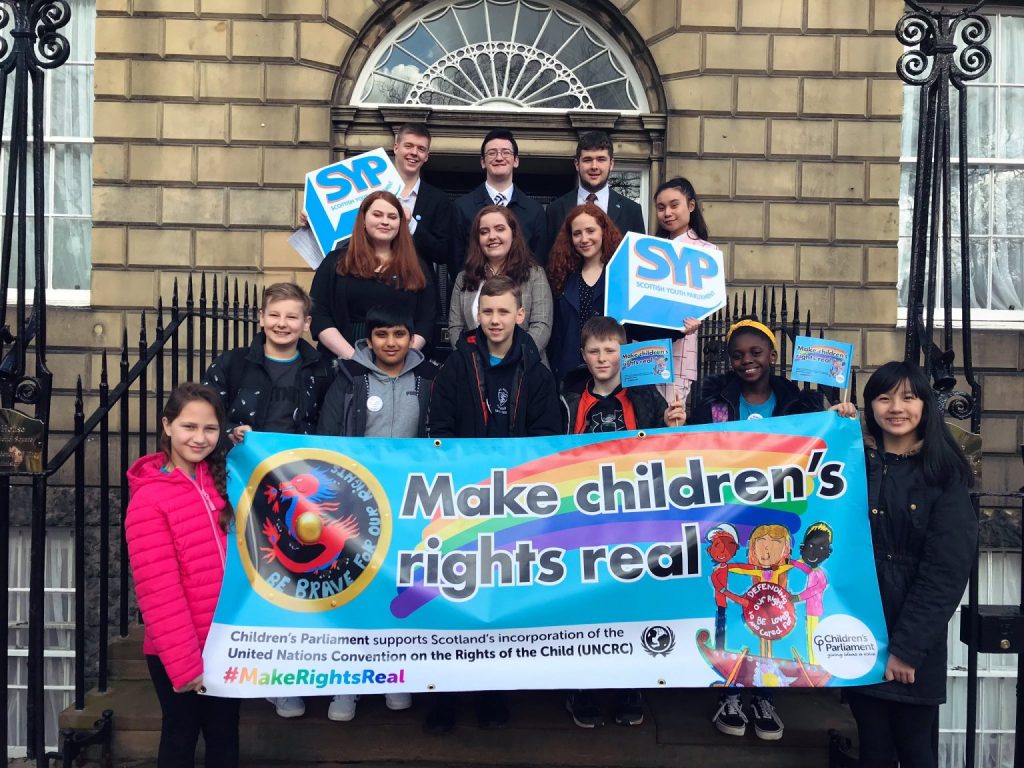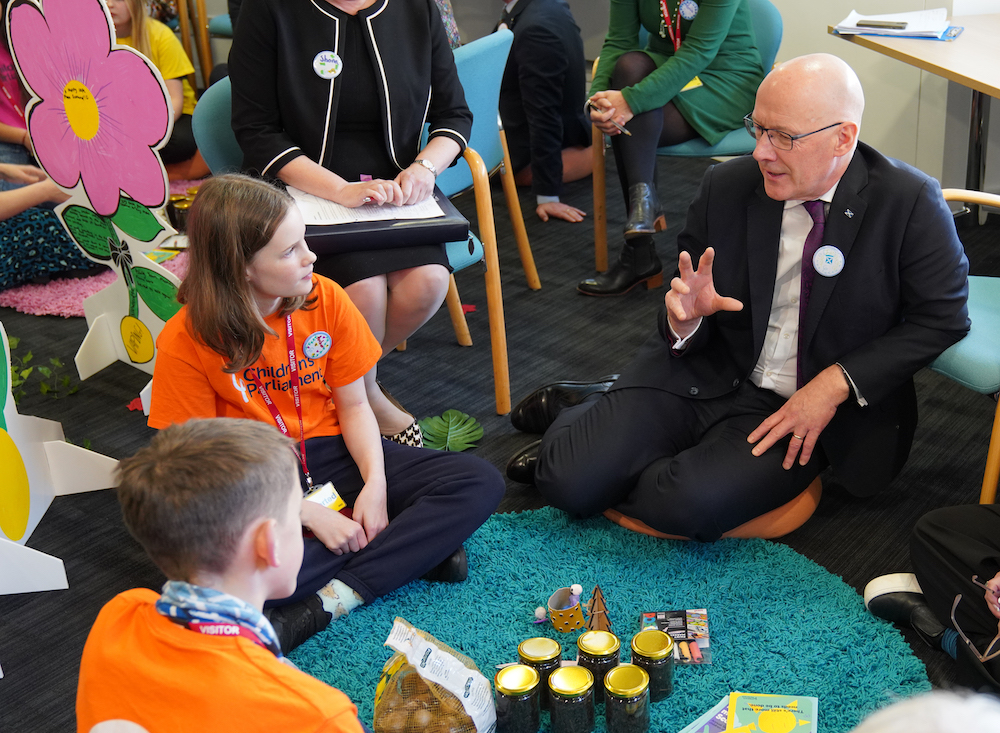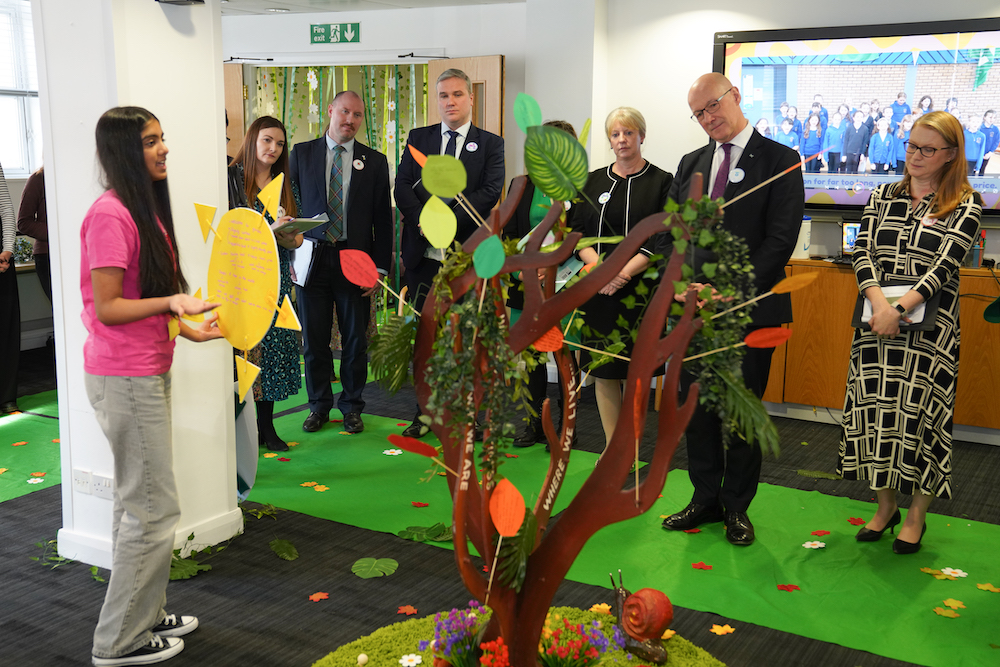In this blog, our outgoing director Cathy McCulloch, reflects on the last seven years of annual Cabinet meetings and shares her hopes for the future of this cycle.

The Scottish Cabinet has held an annual meeting with Members of Children’s Parliament and the Scottish Youth Parliament (SYP) for the past 7 years. Outwith pandemic times, where meetings were online, meetings have been held in the Cabinet room in Bute House and a couple of times in St. Andrew’s House. Bute House has limited space, having to squeeze 14 children and young people around a table with Ministers making it challenging, but cosy. St. Andrew’s House has more space to breathe, with potential to shake-up how we run the process.
Ensuring effective and meaningful engagement with younger children means thinking about what children need to feel welcome, comfortable and able to share their views. Most importantly, children need to feel confident in themselves and in their ability to take part in such an experience. Arriving at Cabinet meetings follows a robust all year-round programme of engagement with children; face to face, online and through residential experiences. Around this is engagement with families, teachers and school communities. It’s important a) for children to see the significance of their work and know that adults in their lives know about and understand the significance of what they’re doing and b) it’s important to use every opportunity to share what the children are doing and how rights-based practice is transformative for children in terms of their levels of confidence, agency and what they can, and believe they can, achieve.
Effective and meaningful engagement also means never sitting children around a formal board table with ‘very important adults’. That’s why, through Children’s Parliament’s extensive film and photo library showing our participation and engagement work, you will see images filled with colour, creativity and children’s agency. From engagement with parents and carers, local authority officials, councillors, civil servants, national and international politicians and UN representatives, you will see children and adults sitting together on the floor or around a creative art piece the children have created. This process allows children to take ownership of the space and the process and allows the potential for rich conversation to take place.
In this new world of everyday child participation, it’s not always easy for those responsible for facilitating meetings between children and adults to be comfortable or confident enough to be willing to change the setting from formal to informal. That’s why we’re very appreciative of colleagues in Scottish Government who are embracing the potential of doing things differently and why the most recent Cabinet meeting was our most rewarding to date. Creating a child-friendly space in St Andrew’s House, hosted by the children, meant adults having to rely on children to host the discussion and explain what was happening, how and why. This created a more equal environment where roles and expectations weren’t tied down in routine or formality.

Children tell us that they feel listened to at these meetings, that Ministers are taking their views seriously and are thinking about what the children are sharing with them. As a result, children believe things might change because they have been enabled to overcome nerves and speak with honesty when sharing their views with the First Minister and other members of Cabinet. After the meetings, children tell us they are excited and looking forward to hearing about the changes to come.
However, this is only part of the story. The 2024 Cabinet Calls to Action focused on:
– Climate Education, where children want to feel part of the change and need hope amid the bleakness of the info they currently get.
– Mental Health and Bullying in Schools, where children want a whole school to feel like a nurturing space rather than specific rooms or areas within a school.
– Vaping, where children are concerned that vaping is seen as ‘cool’ and vapes are too easy to come by.
Clearly these are significant issues and with the best will in the world, change doesn’t happen overnight.

This is where civil servants come in. Over the past couple of years, we have seen more opportunities for children to engage directly with colleagues in relevant policy areas, both within and outwith government, and this is making a difference. Having a chance to understand why children have come to the conclusions and beliefs they have and to take into account ideas children might have that will contribute to better outcomes, for children and society, has clearly had an impact on adults.
We have built in a cycle of Members of Children’s Parliament and Members of Scottish Youth Parliament meeting with the Scottish Government Executive Team at a mid-point in the year, in order that senior government officials can hear about the Calls to Action and how work to progress these is going. There is, for the first time, a process of accountability to children and young people built into the process and this is significant.
I wonder how many other leaders of their country enter meetings through a dignity curtain? Colleagues from around the world are regularly in touch to find out how we do what we do at Children’s Parliament. We are preparing information on the last Cabinet meeting to share the children’s Confidence Kingdom and Dignity Curtain with international colleagues. It would be great if it caught on!
This blog is the third in a series of four. To read the others, please follow the links:
Blog 1 – Journey to the Annual Cabinet Meeting
Blog 2 – Young Ambassador’s Report
Blog 4 – The Annual Cabinet Meeting on the Global Stage